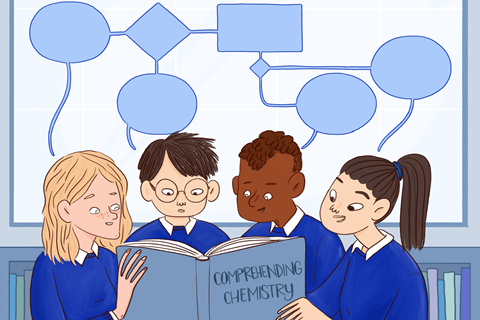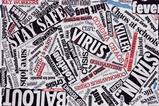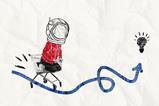Which reading comprehension techniques work?
Before I start this article on reading comprehension in science classrooms (what you can and should do), I have a statement to make: vocabulary and understanding make the most difference to reading comprehension.
Professional scientists read a lot and they understand what they read. This is because they are already experts. It takes a lot of knowledge to read a scientific text, so don’t stop teaching vocabulary and concepts.
But there are several quick-win techniques you can and should teach your students. In this article, I have tried to answer this question: which reading comprehension techniques work and can be taught?

How to teach reading comprehension
You can boost your learners’ reading comprehension pretty quickly. There are a few strategies that work, have a pretty quick pay-off and produce long-lasting results. You don’t hear that often.
A word of warning – don’t go crazy with these strategies. Reading comprehension is useful, but don’t forget, the real reading comprehension technique is knowing loads already. Your job is to teach it. A quick burst of the following strategies at the start and then some reminding is all you need.
4 strategies
The following four sentence starters are effective for practising comprehension:
- I wonder … The reader asks a question about the paragraph they have just read.
- In other words … The reader rephrases the paragraph.
- I predict … The reader thinks about what they anticipate is coming up in the text
- I think the main idea is … The reader reflects on the main point the author is making.
‘I wonder …’ and ‘In other words …’ support the development of comprehension self-monitoring – students asking themselves, do I really get this? If the text is challenging, it will take several reads to comprehend it.
‘I predict …’ and ‘The main idea is …’ help the reader take a step back and think about the paragraph in the context of the full text.
This is not how we read a novel. You should model this and be explicit (‘Err, I’m not sure I got that bit, let me read it again. I wonder … So, in other words … Okay, so I predict … Right then, the main idea is…’)
7 simple rules to boost science teaching
Click to expand and explore the rules
Build on the ideas that pupils bring to lessons
Help pupils direct their own learning
Use models to support understanding
Support pupils to retain and retrieve knowledge
- Pay attention to cognitive load—structure tasks to limit the amount of new information pupils need to process
- Revisit knowledge after a gap to help pupils retain it in their long-term memory
- Provide opportunities for pupils to retrieve the knowledge that they have previously learnt
- Encourage pupils to elaborate on what they have learnt
Use practical work purposefully and as part of a learning sequence
Develop scientific vocabulary and support pupils to read and write about science
Use structured feedback to move on pupils’ thinking
Practising the strategies cooperatively
You could practise these strategies one at a time, but you really want to interleave. The National Reading Panel recommends cooperative strategies, so we practise the strategies in groups.
In class, I split the class into groups of four. I number each group member 1-4. Member 1 reads the text aloud to the others and then asks ‘I wonder …’ Member 2 summarises the paragraph (‘In other words …’). Member 3 predicts what the next paragraph will be about and member 4 states what they think the main idea of the text is. Cooperative reading cards (you can download them below) are helpful at first.
Member 1 then becomes member 2; 2 becomes 3; 3 becomes 4 and 4 becomes 1 (the cards are passed round one clockwise). They then repeat with their new task.
The only problem I find is the noise level. After a few rounds though, the groups learn to filter out the other groups, lean in a little and speak more quietly.
Download some Cooperative reading cards as MS Word or pdf and Graphic organisers as MS Powerpoint or pdf.
What to do once you’ve read it
As always, remember: memory is the residue of thought. Your learners need to do something with the text: summarise; ask questions; answer questions or make connections.
Questions
Simple retrieval questions are fine to check your learners have read the text, but they don’t really encourage thinking. It’s better to use the sort of questions you might use in a class discussion. You might be able to use some of the ‘I wonder …’ questions generated in the cooperative reading.
Graphic organisers
Graphic organisers cause your learners to think about what they’ve read, making it more likely they learn something. The following are useful:
- Mind maps
- Fishbone (Ishikawa diagram) for cause and consequence (download examples below)
- Similar/Different (download examples below).
Conclusion
By practising a few simple comprehension strategies and ensuring your learners think about what they’ve read, you can boost their ability to get meaning from scientific texts. The practice should be in class, but it can be fairly quick (10–15 minutes). Once the strategies become automatic, you can set meaningful reading homework (with a follow-up thinking task).
Further reading
Timothy Shanahan’s blog on Teaching reading comprehension and comprehension strategies
Reading reconsidered: A practical guide to rigorous literacy instruction by D Lemov, C Driggs, E Woolway
Questioning the author: An approach for enhancing student engagement with text by I L Beck, M G McKeown et al
This article is part of the series 7 simple rules for science teaching, developed in response to the EEF’s Improving secondary science guidance. It supports rule 6c, Use activities to engage pupils with reading scientific text and help them to comprehend it.
Downloads
Cooperative reading cards
Word, Size 52.43 kbCooperative reading cards
PDF, Size 43.69 kbUsing graphic organisers
PowerPoint, Size 0.18 mbUsing graphic organisers
PDF, Size 0.11 mb















No comments yet